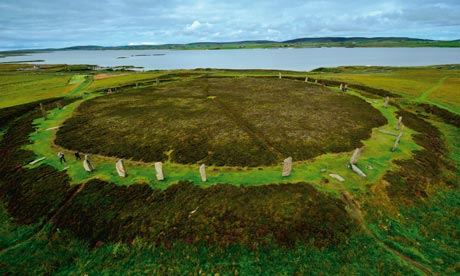Long before the Egyptians began the pyramids, Neolithic man built a vast temple complex at the top of what is now Scotland. Robin McKie visits the astonishing Ness of Brodgar
Circle of life: the Ring of Brodgar – a stone circle, or henge – is a World Heritage Site.
Photograph: Adam Stanford
Photograph: Adam Stanford
This is the heartland of the Neolithic North, a bleak, mysterious place that has made Orkney a magnet for archaeologists, historians and other researchers. For decades they have tramped the island measuring and ex- cavating its great Stone Age sites. The land was surveyed, mapped and known until a recent chance discovery revealed that for all their attention, scientists had completely overlooked a Neolithic treasure that utterly eclipses all others on Orkney – and in the rest of Europe.
Read the rest of this article...

No comments:
Post a Comment
Note: Only a member of this blog may post a comment.